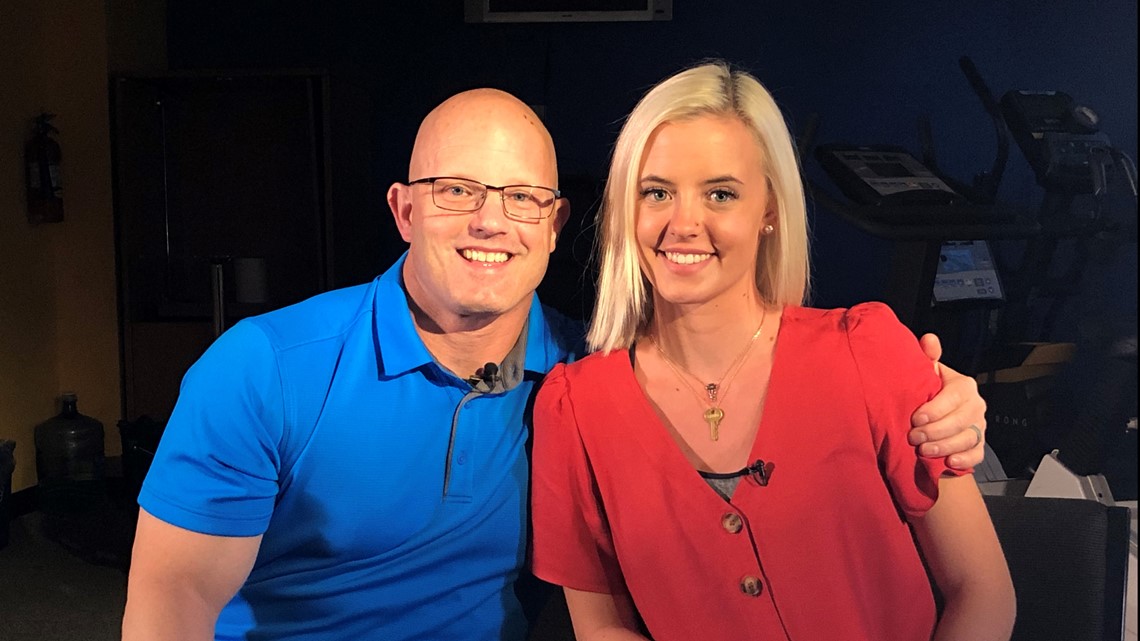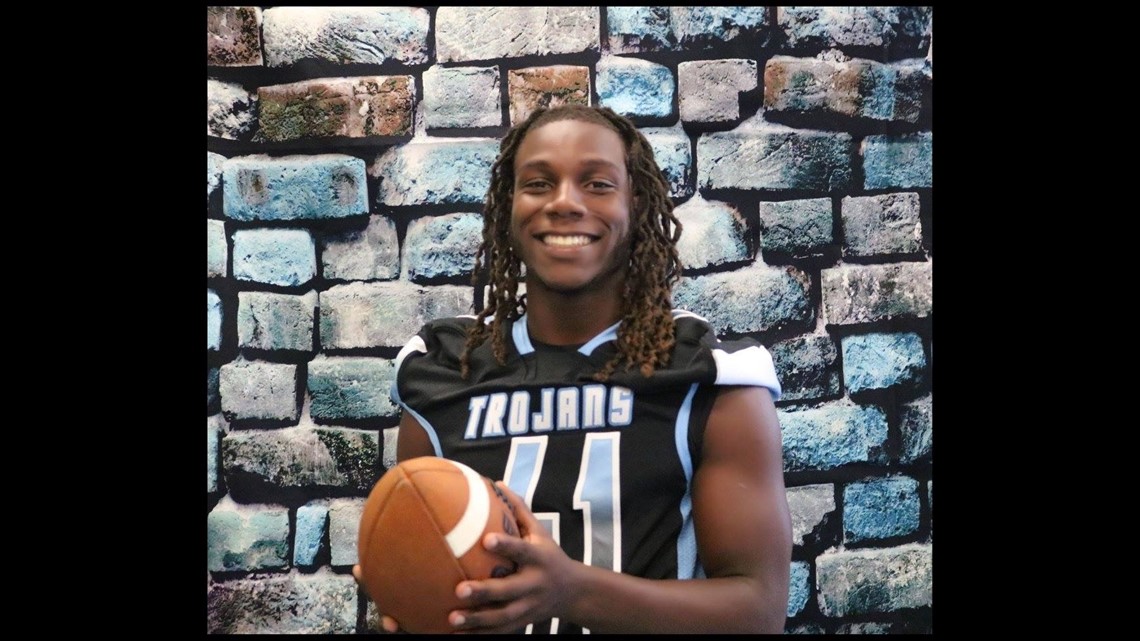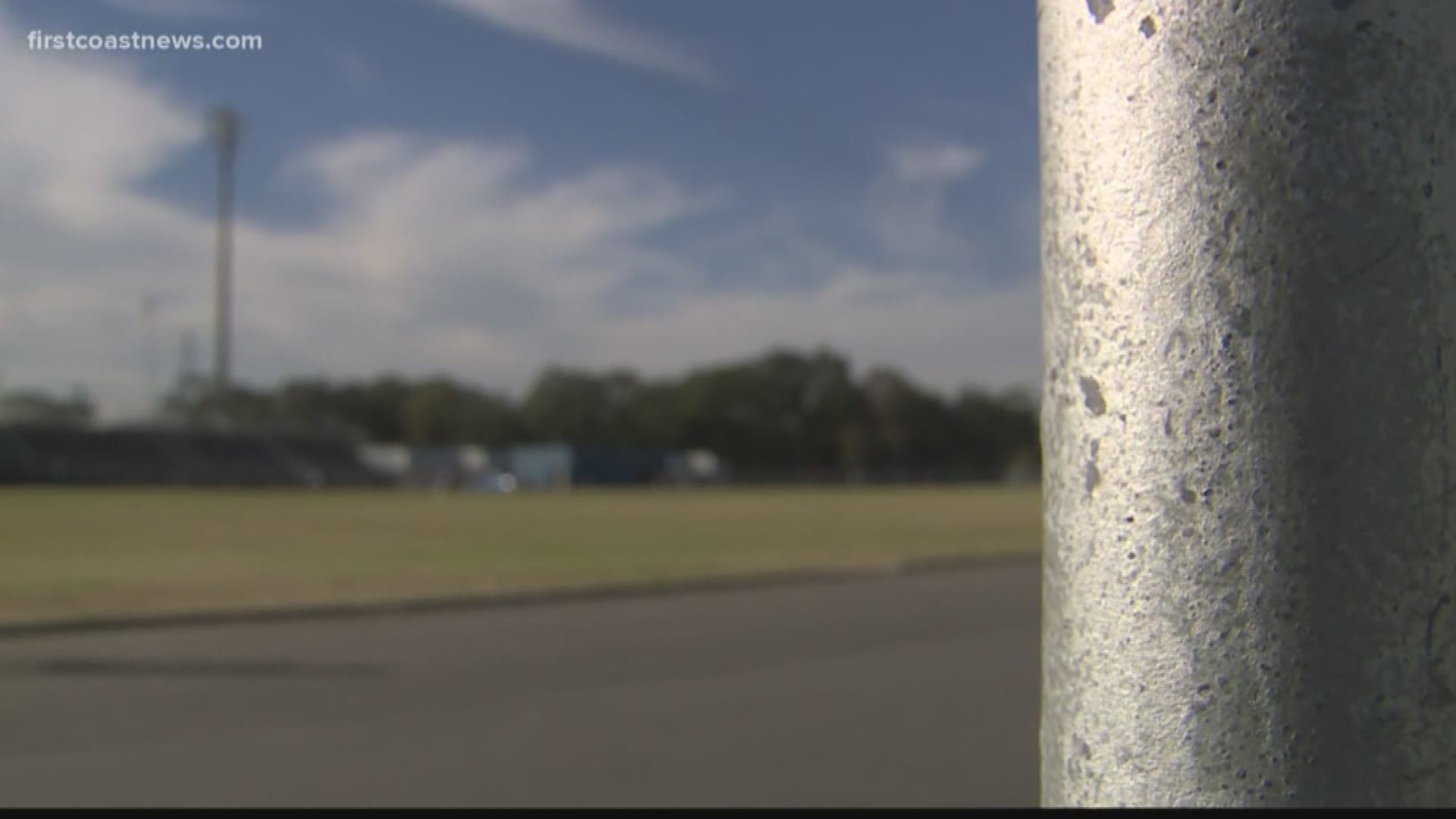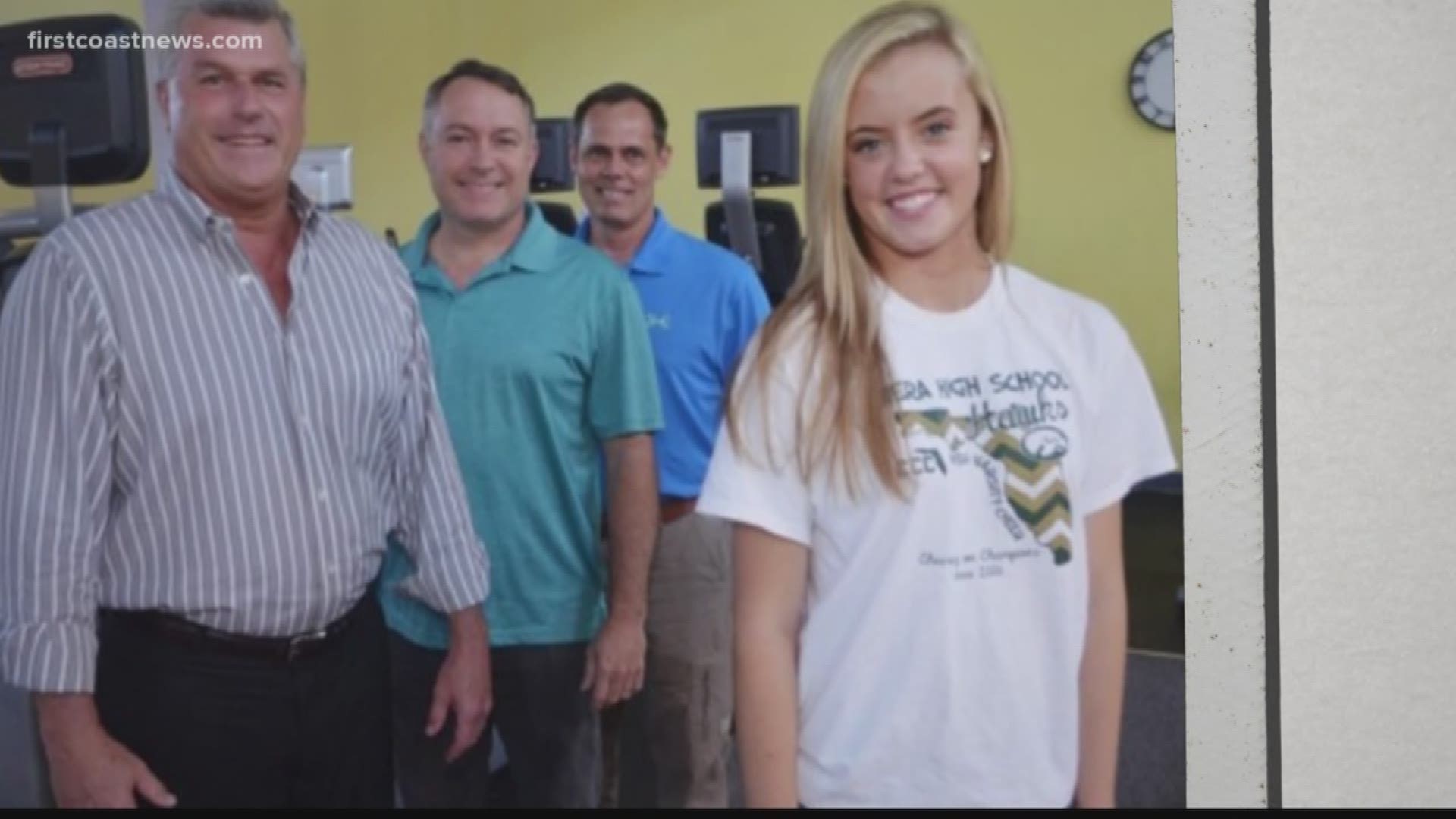JACKSONVILLE, Fla. —
Florida is one of only 12 states in the nation that does not require students to have CPR training before they graduate. A Jacksonville native and his daughter are on a mission to change that and save lives.
Lexi Sima, 19, is a survivor of sudden cardiac arrest.
“I was a 16-year-old athlete. I was the picture of health and this happened to me for no reason. I was alive one second, dead the next doing something I've been doing every day of my life,” she said.
Three years ago she collapsed while running on a treadmill. Her father, Shawn Sima, a physician assistant, was nearby when he got the call.


“She had no pulse. She was not breathing. Clinically she was dead,” he recalled.
The Simas credit four strangers with saving her life.
“They were able to shock her back in the gym,” said Shawn Sima. “If it wasn't for CPR and the use of an AED by four strangers in the gym that night she would have been dead.”
Lexi was flown by helicopter to the hospital and after two days in a coma woke up, lucky to be among the 10 percent of people who survive sudden cardiac arrest. Her father remembers exactly what the doctor told him.
“Your daughter just survived one of the most unsurvivable things there is,” said Shawn Sima.
Sudden Cardiac Arrest is different from a heart attack. It's an electrical problem that causes the heart to malfunction and suddenly stop beating.
“The statistics that are out there are mind-blowing,” said Shawn Sima.
More than 350,000 cardiac arrests occur outside of the hospital each year according to the American Heart Association. About 90 percent of them are fatal. When CPR is administered the survival rate climbs to nearly 45 percent and if an AED is used within minutes 89 percent survive.
“So we're on a mission. I tell everybody that night like most of us I made a lot of deals with God that if he would save my daughter that I don't know what I'll do, but I'll try to make a difference, and he answered,” said Shawn Sima. “I wanted to make sure that no other parent would have to go through losing their kid.”


The American Heart Association estimates sudden cardiac arrest strikes about 7,000 children annually in the United States, students like Paris Byrd who died in 2017 after collapsing at school in St. Johns County. She was just 13.
The Simas are now pushing to make CPR a mandatory high school graduation requirement in Florida, something Dr. Sunita Ferns, a pediatric cardiologist at Wolfson Children's Hospital, says is needed.
“Seconds count. If you want to put a time frame to it, two to three minutes and after that, you know your brain can suffer irreversible damage,” said Dr. Ferns. “You shouldn't be allowed to graduate high school if you don't know how to perform effective CPR.”
“We have to train lifesavers, and we're not doing it right now," said Shawn Sima.
Schools train for active shooters, and the Simas are pushing for them to also train for cardiac emergencies.
“How do you get ready? Just like we do in the hospital. We do drills and our schools need to have an action plan,” said Shawn Sima. “People need to know where the AED is. It doesn't need to be locked up in the athletic director's office."
Being prepared and ready to respond, the Simas believe lives will be saved.
“There’s an eight out of 10 chance that if we do everything right in that first three minutes that we're going to save these children,” said Shawn Sima.
“So really my mission for this now is for heart screenings to give kids a chance before there's even death involved,” said Lexi Sima. “And then in the worst-case scenario if they don't figure that out to get people the AED and CPR education so that if it does happen they do get to live like me.”
DETECTING A TICKING TIME BOMB
Sudden cardiac arrest often happens without warning, but there’s a quick and non-invasive test that can detect problems before the worst happens.


“My chest felt like it was squeezing and my heart just started like it was going to pop out of my chest,” recalled Nigeire Poyser.
The Ribault High graduate remembers his heart racing in high school, but thought he was just overly excited and didn't tell anyone.
He looked like the picture of health. An athlete, he spent much of his time on the football field.
It wasn't until his sophomore year of high school after he checked a box during a physical saying his heart raced that he was flagged to have an electrocardiogram known as an ECG or EKG.
The test revealed he had a problem. He soon learned he had a serious heart condition that could kill him.
“The doctor came in and told me straight up I had Wolff-Parkinson-White, which is a curable and treatable disease,” said Poyser.
The ECG revealed Poyser had an extra electrical pathway in his heart and needed heart surgery. If left untreated the doctor told him he was at risk for sudden cardiac arrest.
“You could literally be on the football field, catch the football and probably run two yards and drop and you won't remember what happened and either (A) you are going to wake up or (B) you won't wake up at all,” said Poyser,
He was lucky. His condition was detected before it was too late.
Evan Ernst's teammate in high school, Rafe Maccarone, didn't survive.
He died after collapsing on the soccer field in Cocoa Beach of a detectable heart condition.


“We felt invincible. So it shook our entire world. On a kind of macro-level what it did was it gave us the big picture view of preventable tragedies and the damage that this has to a community and the shock waves that it sends through a community,” said Ernst.
Sudden cardiac arrest is the leading cause of death in young athletes, according to the Mayo Clinic.
“We got to college and realized he represented thousands, and a group of best friends in Room 114 of our fraternity house decided to be the difference and do something about it,” said Ernst.
They started Who We Play For, a non-profit that brings affordable, non-invasive electrocardiogram heart screenings to schools, sports clubs, even gyms like Orange Theory. The ECG can detect electrical abnormalities in the heart.
“It will catch anywhere from 60 to 80 even 90 percent depending on the study you reference, compared to the standard sports physical which is the stethoscope which will catch around 1 percent of heart conditions,” said Ernst, Executive Director of Who We Play For.
Poyser is now a volunteer with the organization that Ernst says has screened around 100,000 athletes and likely saved dozens of lives.
“We’ve had around 90 with life-threatening heart conditions who needed immediate medical intervention,” said Ernst. “Some of these kids were told by their pediatric cardiologists in follow up appointments that they had ticking time bombs in their chest.”
Like Lexi Sima, Poyser is now healthy, active and on a mission with Ernst to raise awareness about sudden cardiac arrest and save lives.
“It just feels good. I'm here, and I can be here. I can walk out here. I can talk to my coaches and then I can also still tell my story and help people,” said Poyser.
As for who should get ECGs and how often, that depends who you ask.
The American Heart Association says there's insufficient evidence to conclude that mandating screening of competitive athletes or the general young population would save lives.
The following is a statement from the American Heart Association:
“There may be potential health benefits for regular preventative screenings and ECGs for teens and young adults, not necessarily limited to athletes (e.g., in high schools, colleges/universities, or local communities), at risk for cardiovascular diseases. However, there is currently no agreement within the scientific community supported by research to conclude that regular ECGs in teens reduces risk of death.
The AHA recommends health care professionals review and apply the 14-point screening guidelines during physical exams to detect congenital or genetic heart defects in young adults and teens. Additionally, to require ongoing screenings for all 12- to 25-year-olds within the U.S. for cardiovascular disease with ECGs would be an enormous undertaking, requiring significant resources. Research within the field does support a more widespread dissemination of automated external defibrillators (AEDs), which are effective in saving young lives on the athletic field and elsewhere.”
Dr. Ferns with Wolfson Children’s Hospital recommends once kids hit puberty they should have an ECG every few years.
“Right now there's a lot of push back because everyone is worried about the downstream effect of testing, but I think what people don't realize is that not everybody goes on to get tested who has an abnormal ECG. The right tool in the right hands really does make a difference,” said Dr. Ferns.
If you're interested in having Who We Play For offer $20 heart screenings at your school or for you organization click here for more information.


